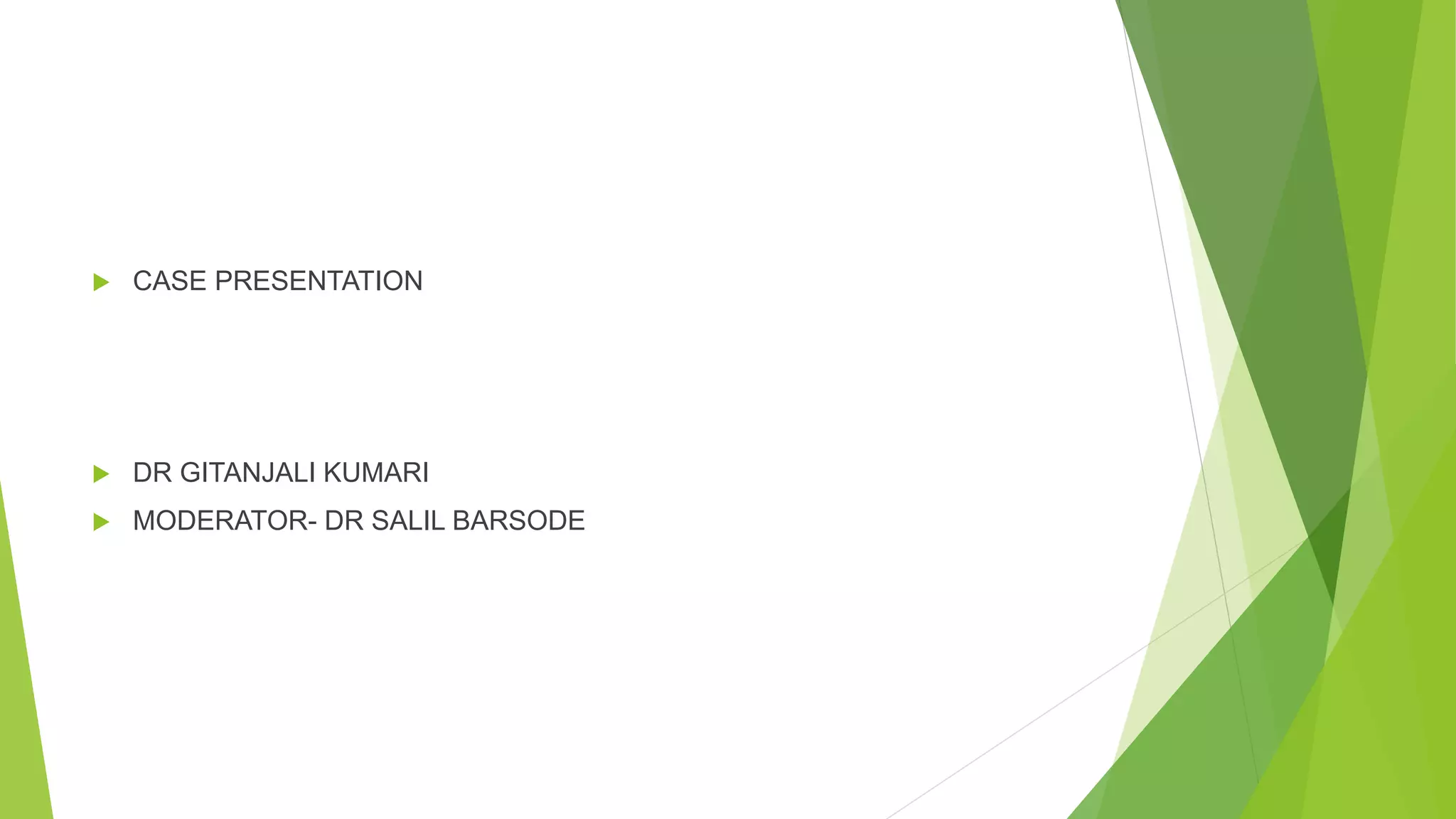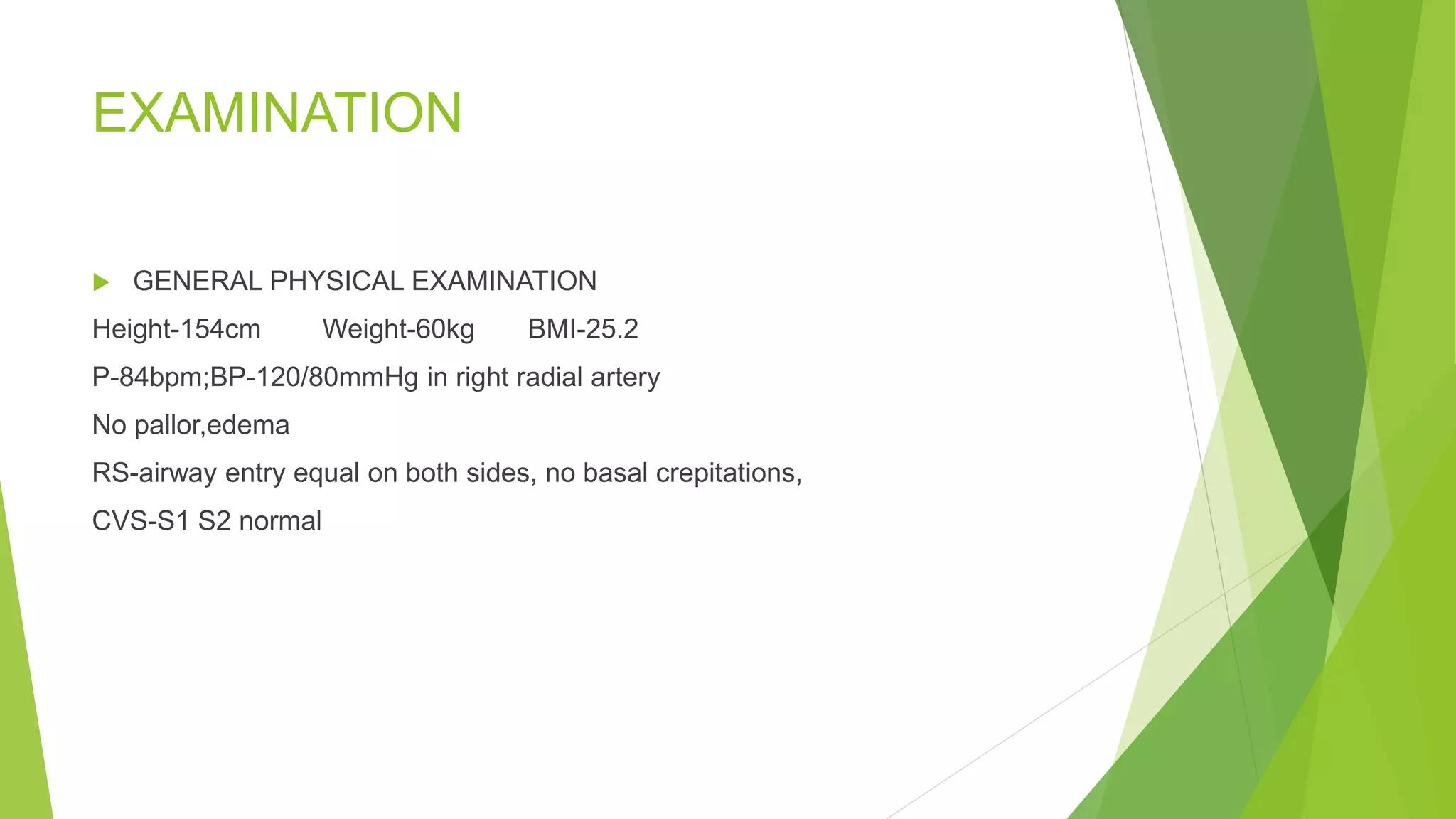Gestational diabetes mellitus (GDM) is diabetes that develops during pregnancy and can cause complications for both the mother and baby if not properly managed. The case presentation describes a 30-year-old pregnant woman with decreased fetal movement at 36 weeks of pregnancy who has a history of GDM. Management of GDM focuses on tight glycemic control through diet, exercise, blood glucose monitoring and possibly insulin to prevent complications like premature delivery, macrosomia, hypoglycemia and jaundice in the baby. Both mother and baby require close monitoring during and after pregnancy.






















































